DIY: How to Paint Stripes on Your Floor
http://decor-ideas.org 09/02/2013 04:30 Decor Ideas
I gave myself the daunting task of making over my three-season porch. I live in New England, so this porch is used only for about five months of the year at best, but I can see it from the kitchen sink, and it connects the kitchen with the backyard, so I wanted it to be a calm, welcoming space for my family. During the colder months, I just wanted it to be pretty to look at.
The biggest change would come through the power of paint. Benjamin Moore's Decorators White on the walls and Harbor Fog on the ceiling provided the bright, crisp look I was going for. But the walls and ceilings were just the finishing touches. The entire design of this room began with one idea: painting gray and white stripes on the floor.
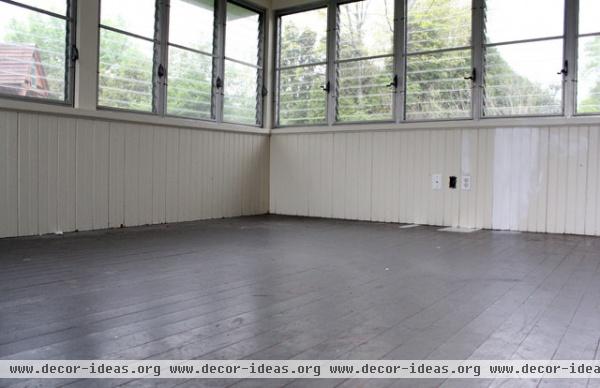
BEFORE: The wood floor was a rather nauseating shade of green-brown with hints of red. Luckily, the wood was in good condition, with no water damage, so no repair work was needed. I began with some prep work, sanding a few areas and filling in some holes with wood filler.
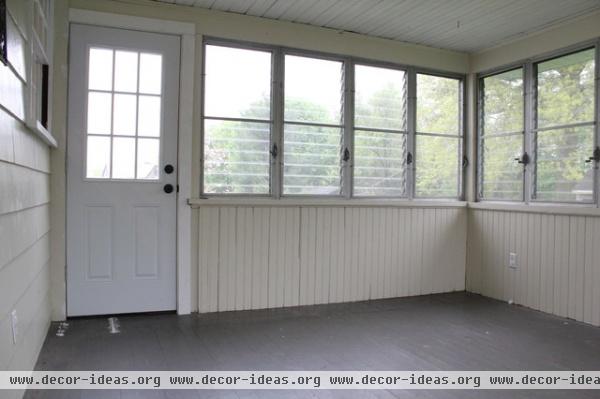
I painted the ceiling first with two coats of Harbor Fog, then painted the walls Decorators White, which immediately brightened the porch.
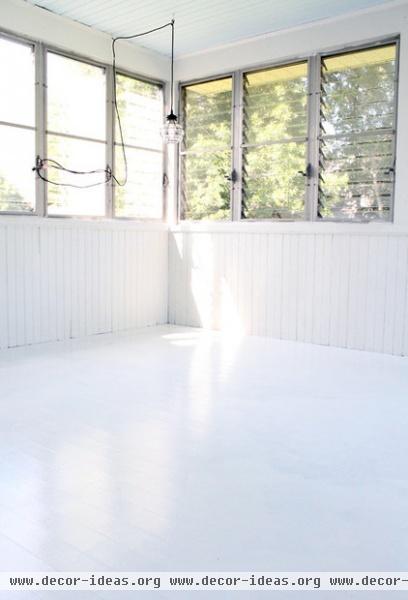
After making sure the floor was vacuumed and free of any dust or build-up, I began work on the floor. Using a 9- by ⅜-inch nap synthetic roller cover and an extension pole, I applied one coat of Benjamin Moore's Fresh Start Primer. I waited five hours before applying the second coat.
Tip: Start painting farthest from the door or exit so as not to box yourself in with paint.
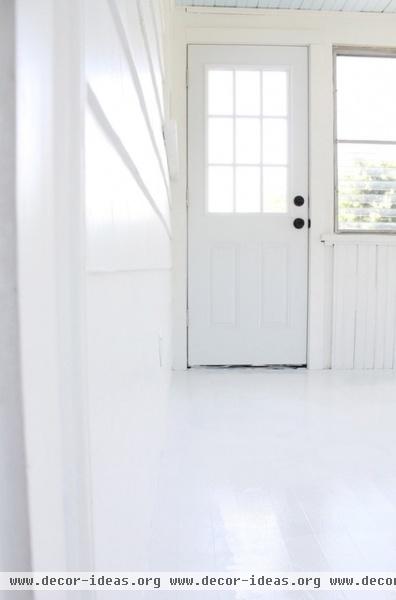
The next day I applied one coat of Benjamin Moore's Floor and Patio paint in Decorators White. This paint is meant for all interior and exterior floors, decks, stairs and concrete as well as masonry surfaces.
My porch is enclosed, so I wasn’t really worried about rain or snow, just colder temperatures in winter. The porch is also a high-traffic area, so I wanted a weatherproof floor and patio paint to withstand what my family of three kids and a dog could throw at it.
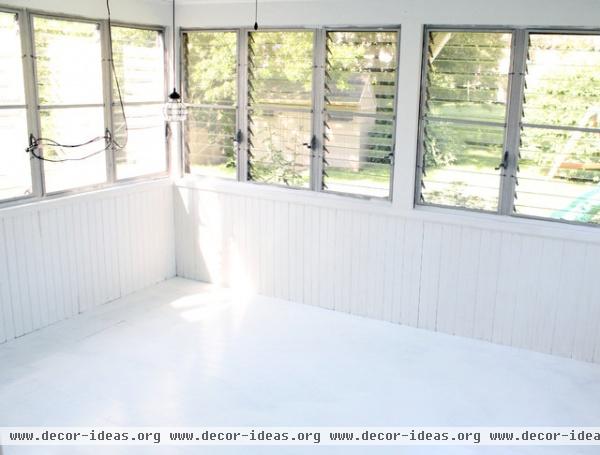
I waited 24 hours before applying the second coat of floor and patio paint.
Tip: Paint your two separate coats in opposite directions. The floorboards run from left to right on my porch. I knew I wanted my second, visible layer to follow the direction of the floorboards, so I painted my first layer perpendicular to that. I’m very glad I did this, since I hadn't noticed how many little holes and gaps I had missed with the primer. There are no large gaps in between my boards, so I wanted a nice, even coat. If your floorboards have spaces, this may not be the case for you.
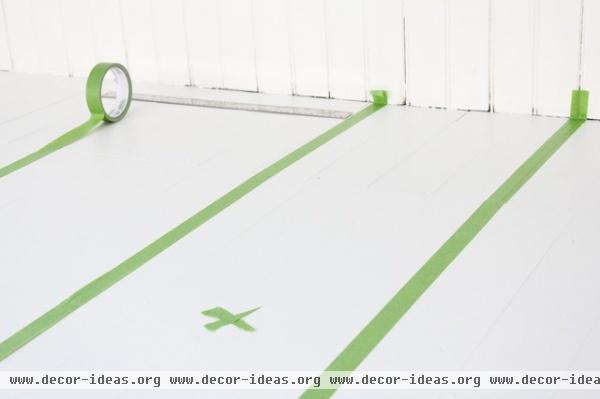
I then began planning my stripes. I would be using the floorboards as a guide to determine the width of each stripe. I did not plan to divide the room up equally in stripes, so I ended up having 11 stripes in total, six white and five gray. Each stripe is 13 inches wide. The last white stripe against the outside wall would be a couple inches narrower, but this was not a problem, since it would be underneath furniture and out of sight.
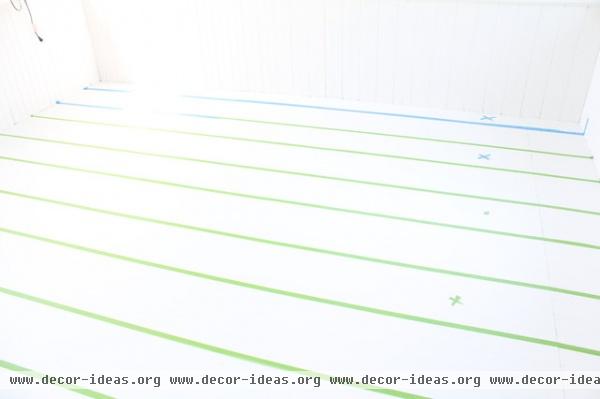
I decided to have the white stripes nearest to the wall. This way the white seemed to be the dominant color, with the second color as the accent stripe. I would be using Benjamin Moore’s Coventry Gray for my stripe color, a warm shade of gray that is beautiful with Decorators White.
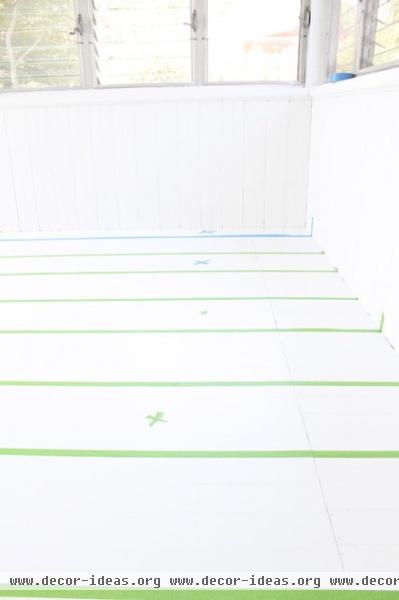
I laid out painter's tape following the lines of the floorboards, measuring every so often to make sure they were straight and even. These tape lines would be filled in with the gray.
I marked each area to stay white with an "x." This came in handy later on when I was painting: I didn’t have to count out the stripes to make sure I was painting the right one; I just did a quick check to find my "x" and make sure I was not painting on it.
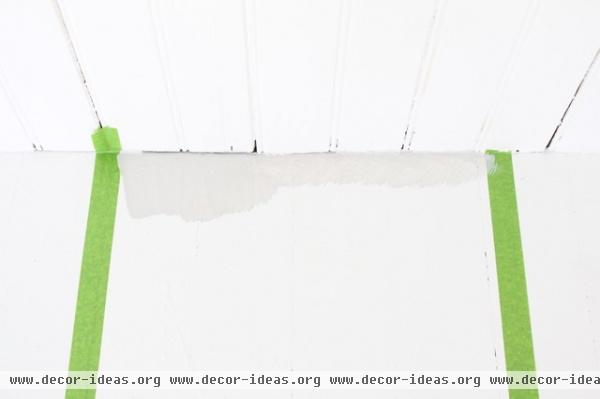
I then sealed down the edges of the tape pieces by running my finger along the sides to make sure they were down securely, with no bubbles. Using a paintbrush, I cut along the wall with my gray paint. This way I avoided having to bring my roller brush close to my crisp white walls.
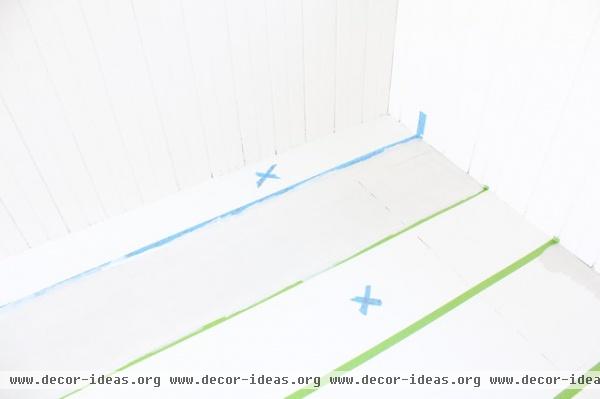
I filled two small containers with both paint colors and used separate 4-inch foam rollers for each color.
Tip: Use one roller to paint over the area at the edge of the painter's tape with the original floor color, sealing the edges. Then paint the entire stripe with two coats of your color (mine was Coventry Gray) and immediately pull off the painter's tape, leaving a crisp and clean line.
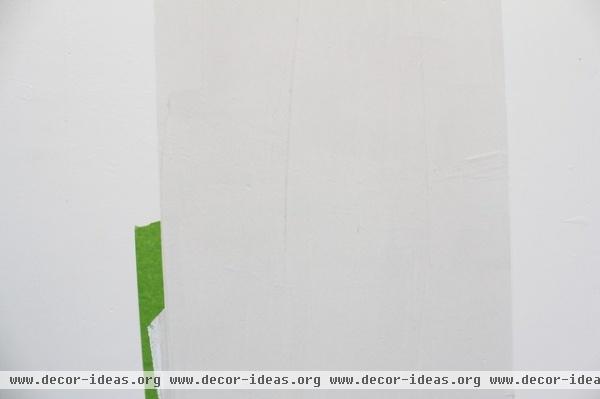
If you first paint the edge of your tape with your base (nonstripe) color, any paint that seeps under the tape will blend in with the background. Once you paint your stripe color, it will be over the newly applied base color as well as your painter's tape, giving you a perfect, clean line.
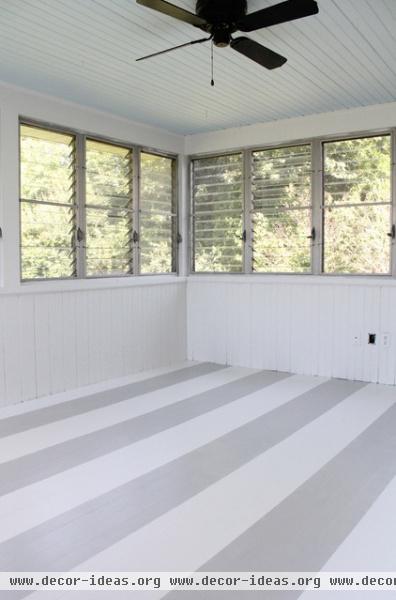
Once the whole room was done, I let it dry for 24 hours.
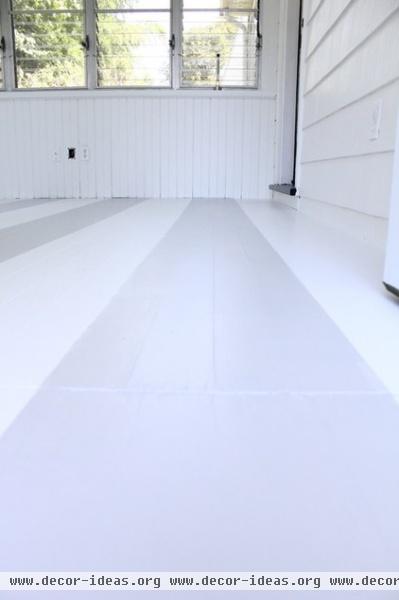
The next morning I decided that my stripes needed a bit more coverage, so I did some touch-up painting. I stayed away from my edges but filled each stripe for a more opaque look.
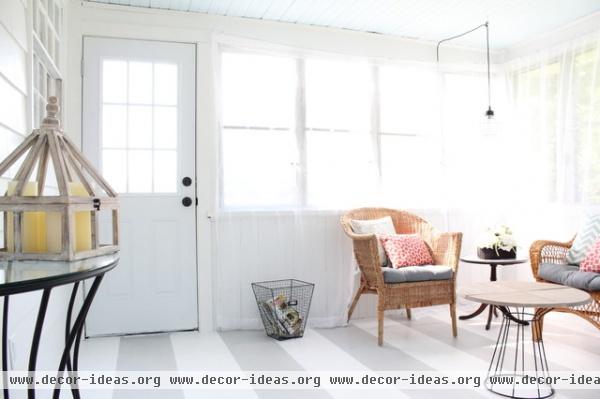
I brought the furniture back in 24 hours after the last paint was applied. The room immediately felt much larger with the stripes running across.

The crisp white walls, serene blue ceiling, stripes and pillows have created the beach-inspired room I had hoped for.
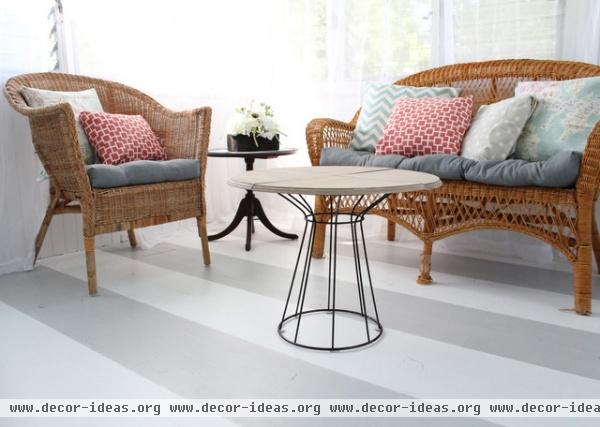
It feels like we’ve gained a whole new room!
Do you have a floor that you’d like to paint? Here are more ideas to get you started.
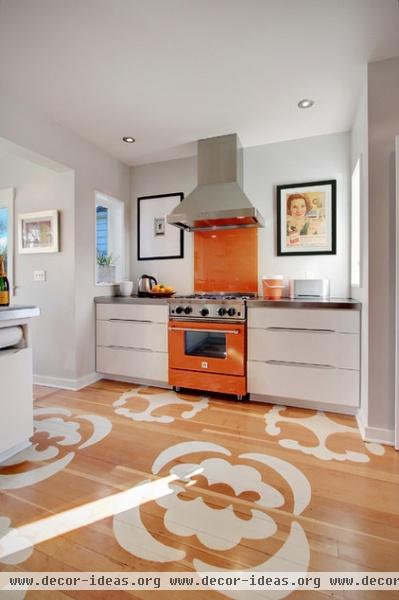
If you are not ready to paint over an entire floor, try a stencil. It can bring a fresh and modern look to an ordinary floor.
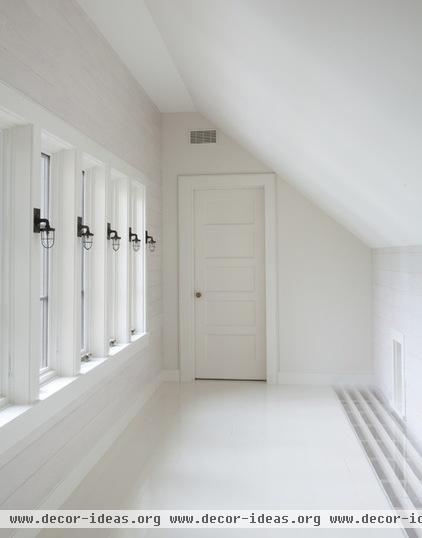
Painting a floor one solid color, especially white, can make a small space feel larger.
Are You Gutsy Enough to Paint Your Floor White?
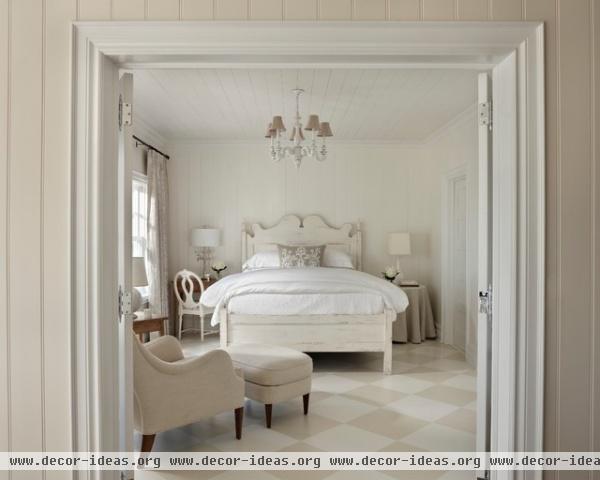
Stripes aren’t the only pattern around. Try anything from checkerboard to herringbone to chevron.

Keep your walls neutral and have that pop of color on your floor instead.

If you aren’t ready to commit to paint, you can stain a pattern on your floors as well — much subtler but just as impressive.
More tips on painting hardwood floors | More photos of painted floors
Related Articles Recommended












